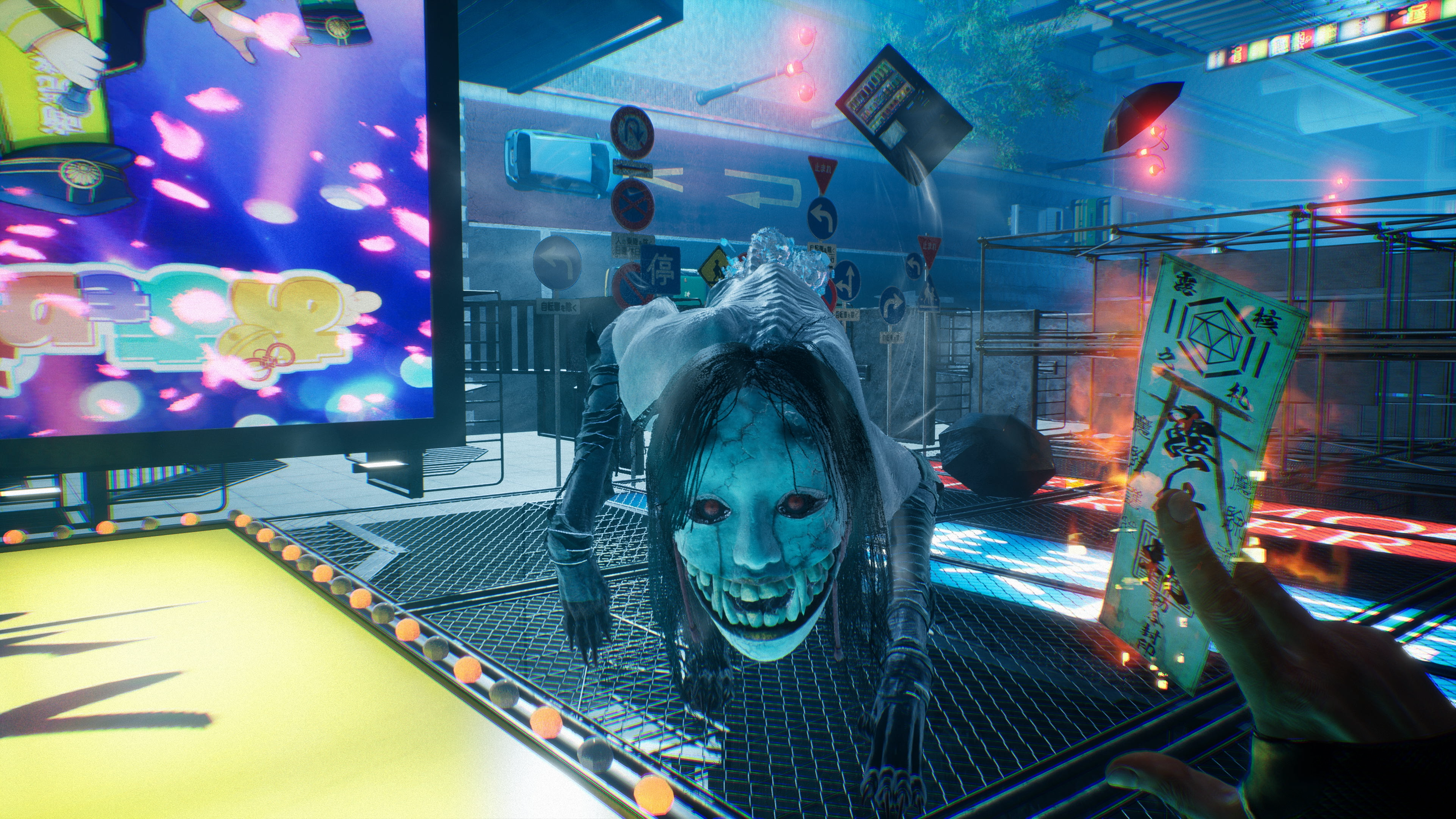Ghostwire: Tokyo is a great game, but one that falls victim to the open world template it is so eager to inhabit. Exploring Tokyo as an ethereal weaving badass, dispatching ghosts and saving spirits feels incredible, but outside of the main campaign you’re performing the same activities whether you’re right at the start of the game or nearing the end.
As a result, diminishing returns inevitably set in. Soaking up wayward ghosts and uncovering collectibles always feels rewarding, but the act of finding them begins to resemble the busywork of so many of the worst open world games out there. Side missions where you uncover bespoke discoveries are great, but the context of these stories isn’t enough to lift up the generic enemy encounters you’ll be trudging through time and time again. It’s a bummer, making me feel that a more linear experience would have been better.
The Evil Within 2 suffered from a similar fate. While the first game was a linear survival horror in the same vein as Resident Evil 4, its sequel took place in a relatively open setting that you could explore to meet supporting characters and take on side quests. It was a great game, partially because it had a far more interesting story than Ghostwire: Tokyo, but its side content never felt essential. Sure, you were upgrading weapons and abilities, but doing so only made these encounters easier instead of more interesting. It didn’t feel worth it.
Walking through Tokyo’s streets in the early hours is so engrossing, with the perpetual rainfall allowing a flurry of neon lights to reflect off every conceivable surface. The night itself isn’t eternal, but you can easily lose hours peeking into alleyways and stumbling into new districts just learning everything that makes this painfully accurate rendition of Japan’s capital tick. But once you obtain a selection of abilities and start hunting down optional quests it becomes clear that the formula doesn’t go that deep. In fact, it’s rather shallow.
I started to see this after the night sky began surrendering itself to morning, a crimson moon peeking through the clouds and teasing the eventual arrival of daytime. As the environment itself became less interesting to explore, so did the open world itself. Side missions became less appealing not because of the emotional stories they had to tell, but due to how I knew they’d end in a repetitive chase sequence or a brief battle against the same group of enemies I’d been fighting for hours. The act of dispatching them feels amazing, but when you know it’s leading to a predictable conclusion going through with them feels pointless.
We’ve seen this with countless open world games in recent years, whether it be Marvel’s Spider-Man or Far Cry 6, it feels like developers are eager to populate the world with all manner of activities in the fear we might get bored. The faintest of justifications are often giving for catching pigeons and murdering wild animals, making it feel like we’re achieving something instead of just killing time for the sake of it. Ghostwire: Tokyo far too often feels like this, and it sucks to see such a distinct setting fall victim to such lazy clichés. I’m sure that wasn’t the intention, but the execution leaves a lot to be desired.
Like many new properties, Ghostwire: Tokyo would benefit from a sequel to iterate upon its weaker ideas. The world could become more interesting and dynamic, while its narrative and characters could be curated in a way where the central mystery actually means something. There are enough weak elements emerging once you reach the third act that it’s difficult to love this game like I really want to. Becoming a supernatural slayer is a joy in the opening hours, but once the joy of rescuing spirits and leaving footprints in the rain subsided I was left with a world to explore that ultimately felt lifeless when I had hoped for so much more.



.png)